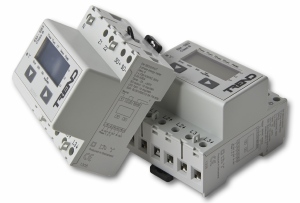Metering energy leads to saving energy

With the latest revision to Part L of the Building Regulations set to come into effect, Chris Monson of Trend Control Systems, explains how sub-metering continues to play a vital role in increasing energy efficiency and why non-compliance represents a missed opportunity.
The Government’s plans for achieving the objectives stated in the Climate Change Act 2008 mean that, when compared to 1990 levels, a reduction in carbon emissions of at least 34% by 2020 and at least 80% by 2050 will be required. These are tough targets, and Part L of the Building Regulations stipulates that the owner or manager of a building must be provided with an appropriate control and monitoring infrastructure to achieve a requisite level of energy efficiency.
Since it was first introduced, Part L has undergone a number of revisions, and the latest (Part L 2013) comes into effect from 6 April 2014.
Sub-metering has always been a key feature within Part L, which states that it must be provided in non-domestic premises with a floor area greater than 500 m2. Also in buildings with a total useful floor area greater than 1000 m2 automatic meter reading and data collection facilities should be installed.
Under the regulations, 90% of each type of incoming energy should be accounted for through the use of sub-metering — which offers an excellent opportunity to establish where savings can be made. A field trial by the Carbon Trust showed that, on average, organisations that switch to using advanced metering reduced their carbon emissions by 12% and achieved financial savings of 5%.
Earlier editions of Part L contained some specific information about the implementation requirements of sub-metering. In recent times this has now changed, and CIBSE TM39 (‘Building energy metering’) outlines the objectives of a methodology that enables the design of metering strategies and systems. The introduction to CIBSE TM39 offers the following wise words: ‘Installing a meter will not save energy on its own. There must also be a system in place to ensure periodic reading of the meter. A meter that is not read, or the readings not acted upon, will save nothing.’
A strategy should therefore result in the gathering of accurate and useful energy consumption data and determine, through the use of sub-metering, where the energy is being used. This should also drill down into specific sites, buildings and areas of activity by interfacing sub-metering with a building energy management system (BEMS).
Operational and energy-meter data can be centrally monitored via devices like Trend’s 963 Supervisor — a graphical, real-time interface that acts as a window to a BEMS and allows permitted personnel to directly access information. Further, a monitoring and targeting (M&T) package, such as the Trend Energy Manager, allows the application of specific calculations and analysis in reports that contain observations, advice, proposals and performance graphs that will help further optimise energy consumption.
Local displays should be used to present a continually updated record of a building’s energy consumption and carbon emissions — showing at a glance whether they are on, below or above performance targets. They also allow anyone closing a building for the evening to ensure the load is at a ‘reasonable’ level before leaving; in schools and colleges energy displays in prominent locations can be used for educational purposes.

A successful strategy will not only improve operational efficiency, it will isolate items not typically included in energy benchmarks and take account of renewable-energy technology by measuring its performance. It should also facilitate the documentation of this data in the building’s logbook.
Energy efficiency is a concern for every type of business. It is therefore disappointing that all too often the requirements of Part L are not being met during the construction phase.
This is a longstanding issue; and in late 2010, CIBSE carried out a survey amongst its members, which found that Building Control personnel rarely carry out the checks that are required. It seems that very little has changed; it’s one thing to install energy-efficient systems but another to have it confirmed that they reach the required standards once in-situ.
Non-compliance with Part L should, in theory, result in work needing to be redone to meet the standard, the withholding of a certificate of compliance, and a low energy-efficiency rating for the building. What's more, a person carrying out work that contravenes the Building Regulations can be fined up to £5000 for the contravention and £50 for each day the contravention continues. However, fines and other penalties are no deterrent if they are unlikely to be issued; much more needs to be done to address this issue and turn common sense into common practice.
The need and demand for improved energy efficiency within the nation’s non-domestic building stock is clear, and sub-metering has a significant role to play. However, it will only reach its full potential if the construction industry embraces Part L, rather than avoids, it and that the relevant authorities enforce it rather than ignore it.
Chris Monson is strategic marketing manager with Trend Control Systems.








